#WorldCitiesDay
Text
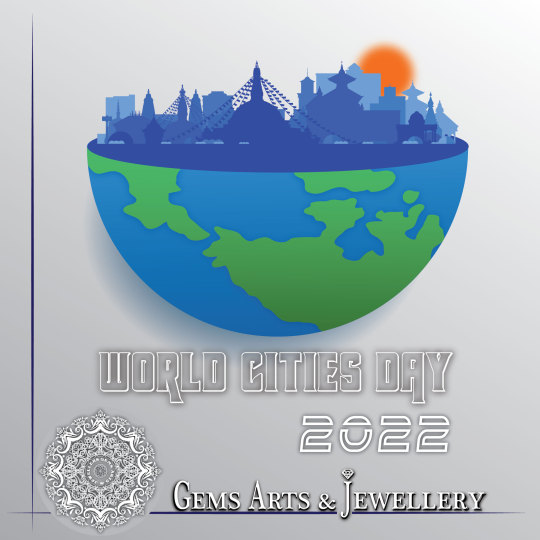
#31 Oct each year is observed as World Cities Day and was first celebrated in 2014. This year’s global observance is planned a under the them#more equitable and sustainable cities.#Let's join our hands to form a collective effort with a goal to make our cities livable#breathable#and green!#- Gems Arts & Jewellery#gemsartsjewellery#WorldCitiesDay#world#worldtravel#Nepal#kathmandu#kathmandunepal#kathmanduvalley#kathmandudairies#Lazimpat#diamond#diamonds#gold#silver#gems#ring#earring#necklace#bracelets#bangles#nosering#anklets#diamondring#repair
2 notes
·
View notes
Text
Event: DCI World Championship Finals in Indianapolis
Event: Drum Corps International DCI Championship in Indianapolis. Spotted some of the groups practicing in White River State Park for the competition. Incredible sights and sounds. Wow! Sharing the beauty in Indy.
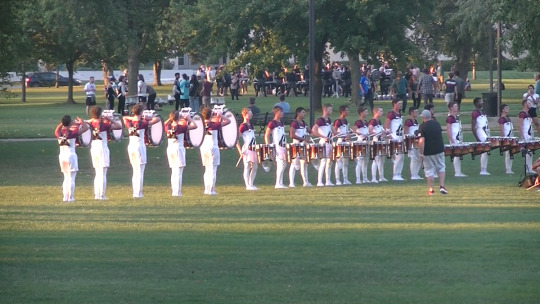
View On WordPress
1 note
·
View note
Text
SUDARSHAN LIVE KHABAR LOBBY
Sudarshanlive:28/10/2023, international news updates, report by – unep,
Cities are major hotspots for air pollution, which severely impacts human and planetary health.With 99% of the global population breathing polluted air and millions of lives lost yearly, let’s pledge to #BeatAirPollution this #WorldCitiesDay & everyday.
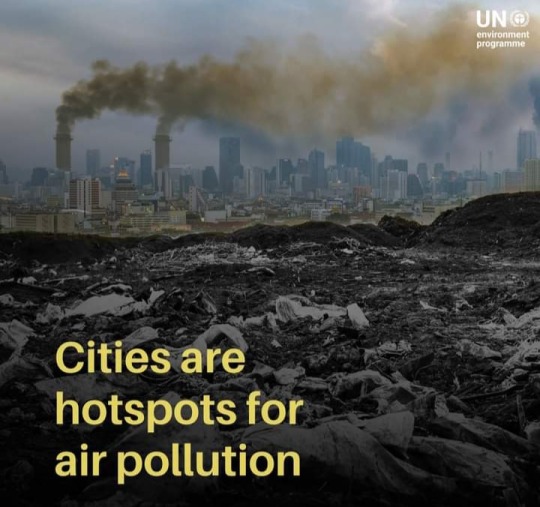
View On WordPress
0 notes
Photo

Você já parou para pensar como a iluminação transformou as cidades? Seja para pousar um avião à noite ou fazer uma caminhada na praça, há algo de mágico nas luzes da cidade. A iluminação pode influenciar nossos sentimentos, nossas percepções e até mesmo, nosso comportamento – muitas vezes sem que percebamos.Não é difícil encontrar músicas que falem sobre as luzes da cidade. Porém, a iluminação urbana representa algo indispensável para o nosso dia-a-dia, ela nos faz sentirmos mais seguros e protegidos; ela é capaz de transformar uma cidade em um local mais comercializável e nos mostrar a beleza arquitetônica presente nas esquinas. E além de tudo isso, a iluminação propicia uma segurança aos seus habitantes. No dia 31 de Outubro, foi o Dia Mundial das Cidades. Você consegue imaginar como seria uma cidade sem iluminação?
#Alalux #Iluminação #Lighting #Luz #Light #DiaMundialDasCidades #WorldCitiesDay #Cidades #Cities #IluminaçãoDeCidades #CityLighting #IluminaçãoDeRuas #StreetLighting #IluminaçãoDePraças #SquareLighting #Arquitetuta #Architecture #BelezaArquitetônica #ArchitecturalBeauty #Comércio #Business #VidaNoturna #NightLife #VidaNoturnaNasCidades #NightlifeInCities #Segurança #Safety #Comportamento #Behavior #IluminaçãoUrbana
0 notes
Text
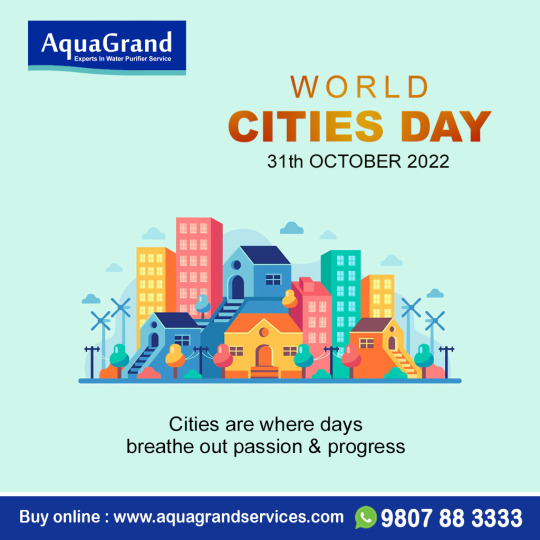
"Cities are where days breathe out passion & progress" Happy World CITIES DAY
#WorldCitiesDay #CitiesDay #cities #AquaGrand
No.1 Trusted Water Purifier Service Provider In Kerala. | Multi Brand Water Purifier Repair And Services... | Services Call: +91-9807883333, +91-9686548888 | Book Online @ www.aquagrandservices.com
#waterpurifier#waterpurification#waterpurifierservices#waterpurifierepair#watertreatment#waterpurifierfilter#reverseosmosis#rorepair#cleandrinkingwater#waterfilteration#alkalinewater
1 note
·
View note
Photo
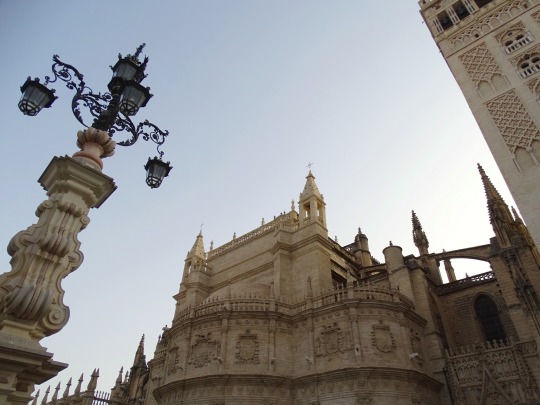
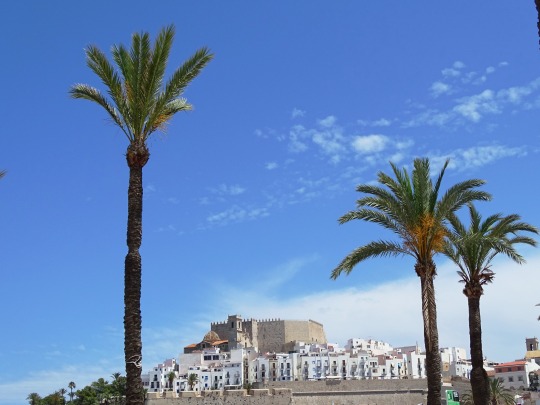

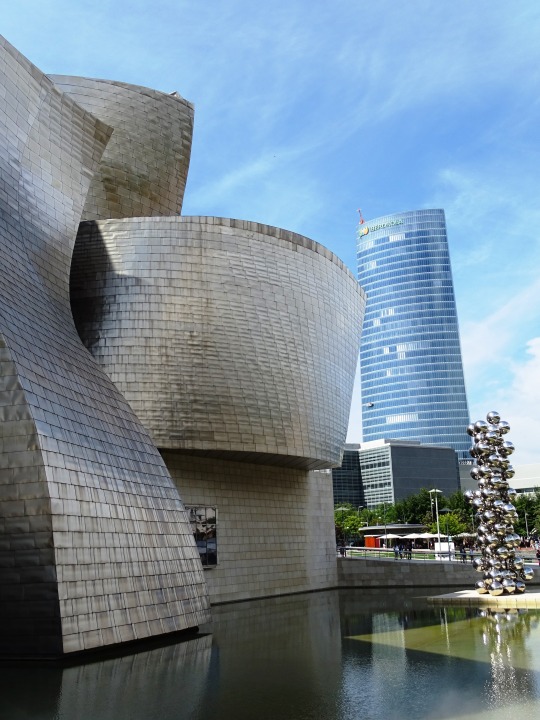
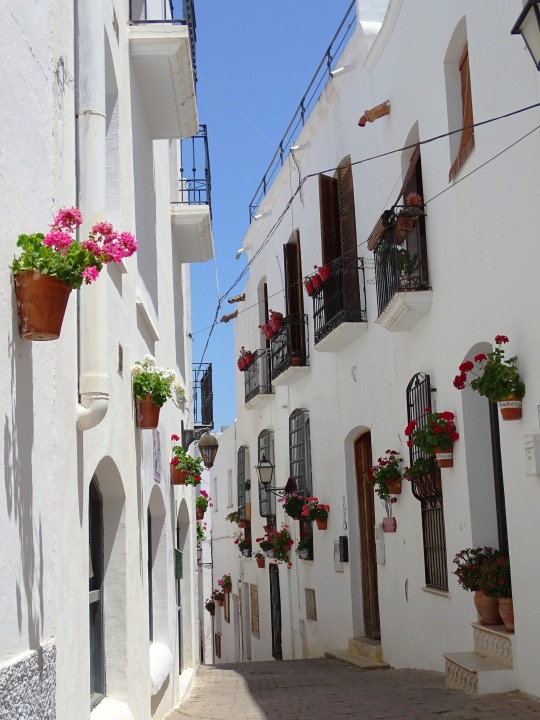
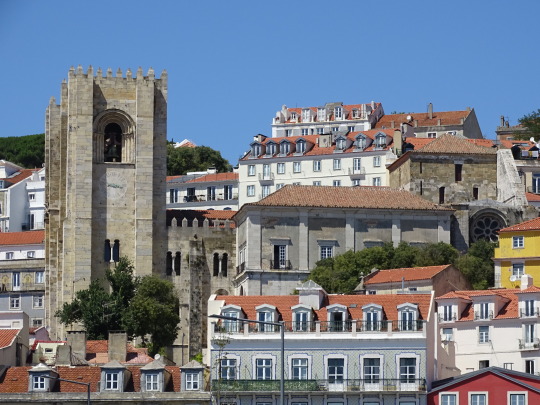
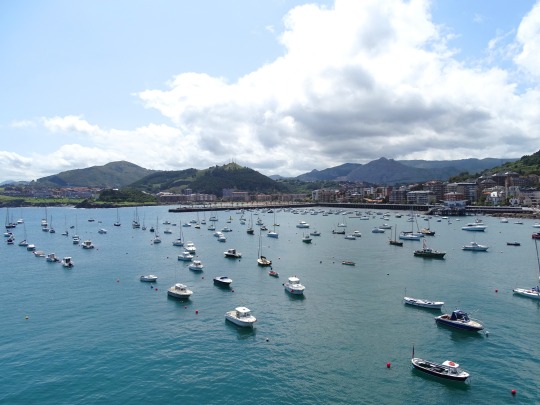
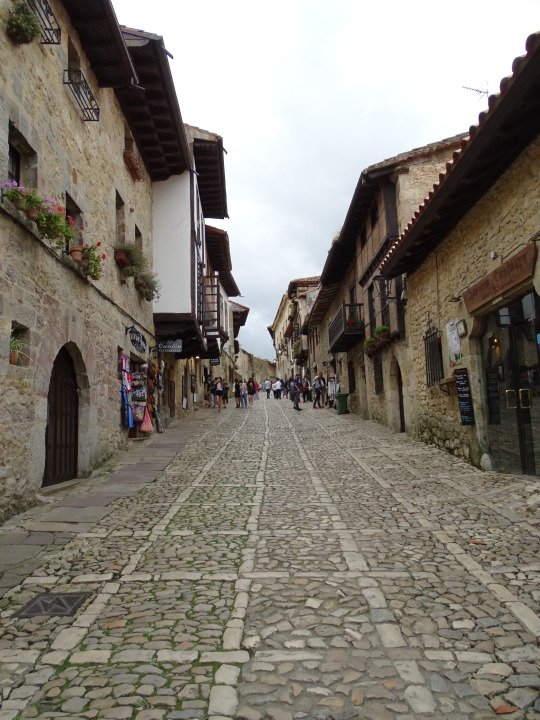
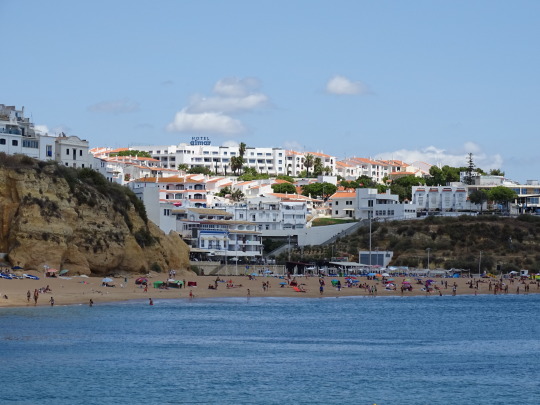
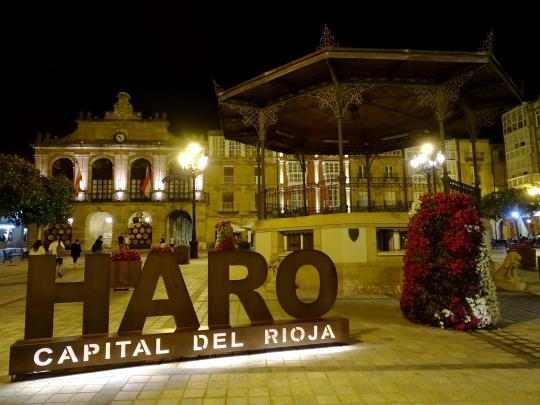
World Cities Day
The month of Urban October will end, as always, this year with worldwide celebrations of World Cities Day on 31 October. The main Global Observance will be co-hosted by UN-Habitat and the Government of the Arab Republic of Egypt and will take place in Luxor.
The Global Observance held in a hybrid format will bring together high-level representatives from national and local governments, UN agencies, development partners, the private sector, civil society organisations and academic institutions to exchange innovative ideas, best practices and solutions to build urban climate resilience. It will include a live link to the World Cities Day celebrations at the Dubai Expo, speeches from the event in Shanghai and a pre event day of discussions and field visits. The Global Observance celebration registration is open here. It can also be followed on YouTube here.
The theme for World Cities Day 2021 is Adapting Cities for Climate Resilience reflecting the fact that climate change will have a huge impact on city residents with hundreds of millions of them experiencing floods, rising sea levels, storms and increasing periods of extreme temperatures.
Cities and towns around the world are encouraged to hold events to mark World Cities Day to raise awareness about sustainable urbanization. Many urban centres have failed to invest in city resilience due to lack of funding or capacity, awareness or action plans threatening efforts to reduce poverty and the achievement of the Sustainable Development Goals.
World Cities Day was established in 2013 by the United Nations General Assembly in its resolution A/RES/68/239. The first World Cities Day was held in October 2014.
A legacy of Expo 2010 Shanghai China, World Cities Day aims to promote the international community's interest in global urbanization, push forward cooperation among countries in meeting opportunities and addressing challenges of urbanization, and contributing to sustainable urban development around the world. The observance day ties in with Sustainable Development Goal 11, to make cities "inclusive, safe, resilient and sustainable".
The general theme of World Cities Day is Better City, Better Life, while each year a different sub-theme and a location for its global observance is selected, to either promote successes of urbanization, or address specific challenges resulting from urbanization.
Cities are hubs of innovation and human ingenuity — and potential centres for transformative action to implement the Sustainable Development Goals and build a zero-carbon, climate-resilient and socially just world. The theme of this year’s World Cities Day, ‘Adapting Cities for Climate Resilience’, comes at a time when cities must be more resilient than ever before. They have been epicentres of the COVID-19 pandemic and are on the frontlines of the climate crisis.
The World Cities Day this year, falls on the first day of the UN Climate Meeting in Glasgow, and we are all realising that the climate crisis is a threat to all. We can trust that countries around the world are going to honour the pledges, to slash greenhouse gas emissions and slow down global warming. We already know that even with huge cuts in our emissions, global warming will continue for many years to come.
Source
#Peñíscola#World Cities Day#last Sunday in October#31 October 2021#Spain#travel#summer 2021#original photography#architecture#cityscape#Portugal#vacation#WorldCitiesDay#Mojácar Pueblo#Almería#Sevilla#Albufeira#Lisbon#Atlantic Ocean#Santillana del Mar#Haro#Guggenheim Museum Bilbao#Castro Urdiales
1 note
·
View note
Text

The one city I've never been to yet, it resonates with me.
93 notes
·
View notes
Text
Resilience: Boston and the world city ranking
In 2014, the Grosvenor Group Limited published their annual research report on resilient cities. The main purposes of this research project are twofold. One is to understand cities in a way that can allow them to “create portfolios of real estate assets which are resilient and operate in emerging markets fully cognizant of the risks.” Grosvenor is an internationally diversified property group that invests in real estate. It has a global reach and is now in 62 international cities. Those cities are across Africa, Europe, in the Americas. The second main purpose of this research is the hope to contribute to the development of policies, supra-national, national and local, that make places more resilient. In this research report, they define a resilient city as “the ability of a city to avoid or bounce back from an adverse event- comes from the interplay of vulnerability and adaptive capacity.” I am analyzing the two keywords from this definition: vulnerability and adaptive capacity because they are the core criteria upon which, Grosvenor measure resiliency of world city. Furthermore, I am going to meticulously critique Boston’s position in the grand scheme adaptive capacity and vulnerability.
Grosvenor defines vulnerability as a “city’s exposure to shocks in terms of both magnitude and frequency.” Socio-political tensions and economic inequality are among the factors that may lead to shocks in cities. Yet, the Grosvenor report emphasizes on climate (with a particular focus on sea level, hurricanes, and typhoons, wildfires, floods, floods, drought and the mass movement of population), environment (with a focus on measuring threats to the city from the pollution of all kinds and overconsumption of land resources due to urban sprawl) , resource, infrastructure, and community, as the themes in the area of vulnerability. There is neither mention nor categorization of these themes by order of significance. By not ranking these themes, this gives with greater flexibility to counterargue or refute Grosvenor’s order of classification.
And so, I disagree with Boston being ranked 12th of out the 50 least vulnerable world cities. It should rank lower than 12th because some of our neighborhoods--such as the Seaport District and East Boston--are too fragile and too vulnerable to flooding when it rains. According to a 2016 city of Boston report on climate, Boston could see 8 inches (20 centimeters) of sea level rise by 2030, with the Seaport District the most vulnerable area. By 2070, seas could rise 36 inches (91 centimeters) higher than in 2000 levels. Some 90,000 residents and 12,000 buildings are in the area threatened by increased flooding, (Marcelo 2018). Although the city report came out in 2016 and the Grosvenor report on was published in 2014, Boston climate and environment challenges, such as continued sea rising, are nothing new. In another report published by Northeastern University, by 2050, projections indicate a possible two-foot rise in sea level, with a 1% annual chance of flooding up to 7 feet posing a massive risk to residents and business in East Boston (Cheng 2018). There are many other arguments that can be made to challenge the high ranking of the Massachusetts state capital. Including one on our crumbling infrastructure, where Massachusetts is ranked 9 out of 10 states with the worst infrastructure in the country,42 percent of our roads are in poor or mediocre condition, (Cohn 2018). It is evident that Boston being ranked 12 out of the 50 least vulnerable world cities is questionable.
The other key criteria upon which Grosvenor research report ranks world resilient cities is adaptive capacity. Grosvenor defines it as “changes over time in response to economic growth, technological developments, religion, public pressure, and lobbying and the nature of government.” The themes in the area of adaptive capacity are governance (democracy and freedom), institutions, technical learning (which entails the availability of technology and the presence of technical universities where technological expertise is fostered), planning system, funding structure. Boston is ranked 9th compared to New York which is ranked as the number out of the 50 world cities.
I also question the ranking of Boston in this category. It deserves a higher ranking when considering the theme governance where freedom and democracy take precedence. The Massachusetts state capital is the epicenter of many revolutionary socio-political changes. It is the first place in America to make marriage equality the law of the land (Supreme court 2013). It is also the first state to provide nearly universal health care coverage for its resident (Belluck 2006). Then, in the area of institutions and technical learning, the greater Boston area boasts the most impressive concentration of top universities in the world and is one of the best educated in America. It is home to a number of higher education institutions — including Boston University, Harvard University, and Northeastern University (Stebbins and Sauter 2018). Hence, I would have ranked Boston higher than New York in adaptive capacity.
In the overall world city ranking, using both the criteria of adaptive capacity and vulnerability, Grosvenor reports the three most resilient cities in the world are in Canada. The reasoning is that Canadian cities have a strong combination of low vulnerability and high adaptive capacity, which include a high level of resource availability, great governance, a structure planning system in place with both short- and long-term goals. These three cities are Toronto, Vancouver, Calgary. Grosvenor also mentions that six of the other top ten cities are in the US. These cities include Chicago, which ranks number 4, the highest ranking for any US cities. Boston ranks as number 7. This appears to be reasonable to some extent.
Other US cities in the top 10, include Washington DC (9), and Atlanta in number 10. Grosvenor notes that US cities do not score particularly well in our vulnerability rankings. Moreover, Socio-political tensions, economic inequality, lack investment, and urban sprawl leads to the over-consumption of lands resource are a challenge in US cities. According to the report, most of the European cities rank in between 10 to 30, this includes London which places in the 18th position due to housing unaffordability and socio-political tensions like Brexit. Grosvenor also highlights the world least resilient cities are in the emerging markets. Eight of these are in the “‘BRIC’ countries...Their vulnerability derives from inequality, poor infrastructure provision, and environmental degradation, etc...” From these chains of reasoning, it appears that adaptive capacity is more prevalence than vulnerability in assessing resilient cities.
Hence, I find it very interesting that Chicago is the highest ranked in US cities. First, Chicago has its fair challenge of dense population. It stands as the third largest urban agglomeration in the world in land area, trailing only New York and Tokyo (Cox 2011). Second, the deep racial tensions and ongoing tensions between the police and black communities continue to be agonizing (Hassett-Walker 2019). Third, in term of adaptive capacity, more specifically in the area of governance, Chicago has been in recent time synonymous to political corruption. According to USA Today, over the past four decades, federal prosecutors have racked up more than 1,700 corruption convictions of elected officials, government employees and contractors, (Madhani 2019).
It is also interesting that the two US cities in which Grosvenor Group has a presence are Washington DC and San Francisco. The latter ranks number 16th in the overall resilience world city. There are six other US cities that position higher than San Francisco. This is worth highlighting since one of the purposes of Grosvenor research report is to become cognizant of how vulnerable cities are when making an investment as well as understanding cities adaptive capacity. The question is: why do they have a presence in Francisco-- and not in cities like Boston which rank higher than cities they have a presence in? Perhaps, Grosvenor Limited Group was not aware of this ranking when they decided to make San Francisco and Washington DC their American home, respectively in 1975 and 1988 (Grosvenor Americas). Or maybe, we could expect that they would eventually start investing in other American cities that rank higher in the world vulnerable cities. As it is written in their report, “Understanding cities helps us with the careful allocation of capital between our three distinct areas of business and gives us insight into where we may want to have a presence in the future.”
As an emerging urban planner and policymaker, the merit of Grosvenor research report is that it helps shed light on critical issues in the area of resiliencies. It compels all of us to act responsibly and strategically. In this way, the research report achieves its aim to spark more conversation and influence relevant stakeholders. As Grosvenor articulates it, “by ranking cities, we hope that our work contributes to the development of policies, supra-national, national and local, that make places more resilient, particularly those at the bottom of the hierarchy.” In recent times, we have seen more and more world cities leaders are planning to address climate change and taking steps to enhance their adaptative capacity and become more resilient.
Late in 2014, the city of Boston joined 100 Resilient Cities-- an initiative pioneered by The Rockefeller Foundation--to reaffirm its commitment to building a resiliency city that is capable of meeting the increasing socio-economical and physical challenges of the 21st century. In 2017, at the unveiling of the citywide resilience strategy, Boston Mayor Martin J Walsh said:
"True resilience requires us to go beyond treating the symptoms of inequality, to changing the structures that produce it. To be a strong city, we must learn to understand one another, break down the systemic racism of our history, and advocate for the rights of every Bostonian. We will build a resilient Boston - prepared to confront the many challenges of the 21st century - upon a foundation that protects equal opportunity for everyone."
REFERENCES
A Grosvenor Research Report. (2014). Resilient Cities. www.grosvenor.com
Belluck, P. (2006, April). Massachusetts Set to Offer Universal Health Insurance. www.nytimes.com
Cheng, Y. (2018). Sea level is rising, what effect might flooding have on East Boston by 2050? https://web.northeastern.edu/visualizingeastie/what-effect-might-flooding-have-on-east-boston-by-2050/
Cohn, S. (2018, July). America in crisis: The 10 states with the worst infrastructure. www.cnbc.com
Cox, W. (2011, July). The evolving Urban Form: Chicago. www.newgeography.com
Hassett-Walker, C. (2019, June). The racist roots of American policing: From slave patrols to traffic stops. www.chicagoreporter.com
Madhani, A. (2019, January). In corruption-plagued Chicago, high-level shakedown charges loom over mayoral race, candidates. www.usatoday.com
Marcelo, P. (2018, June). In Boston’s booming Seaport, the namesake is also the threat. www.boston.com
Stebbins, S. and Sauter, M. (2018, May). 25 richest cities in America: Does your metro area make the list? www.usatoday.com
Supreme Court. (2013, July). Factbox: List of states that legalized gay marriage. www.reuters.com
Walsh, M. (2016, November). The Blueprint. A Review of the Principles & Framework for Boston Resiliency Strategy. www.boston.gov
1 note
·
View note
Text
KAILASA commemorates World Cities Day (31 October 2021) through its theme: Better city, better life in remembrance of our Hindu ancestors who created enlightenment-centric cities, ecosystems, and societies that achieved sustainability goals, environmental protection, as well as fine climate-resilient policies as per Vedāgamas, the source scriptures of Hinduism as envisioned by Bhagavan Paramaśiva and revived by the living incarnation, the SPH Nithyananda Paramashivam. Prominent ancient successful sustainable civilizations demonstrated long-lasting resolute, highly advanced technologies and thrived on conscious enlightenment-centric ecologically-friendly livelihood.
World Cities Day encourages the understanding of ancient human history and how sustainable development and environmental protection are reflected through the lives and quotidian activities of human beings in the Vedic era. The discovery of various documents and evidence excavated in the early period sheds light on the association between urban settings and ecological habitats for a climate-resilient city. KAILASA has revived the ancient well-planned architecture as a viable alternative to solve21st-century concerns of carbon neutrality, energy, global warming and climate change.
The SPH Nithyananda Paramashivam stands as the unifying force for the 2 billion born and practicing Hindu Diaspora worldwide and established the only Hindu State, KAILASA -the ancient civilizational Nation for the persecuted Hindus in over 100 countries and has been single-handedly, tirelessly inspiring the dispossessed Hindu Diaspora to reclaim their Hindu centric freedom and tradition through reanimating these ecosystems. KAILASA, as a Nation, with de-facto spiritual embassies operating across over 100 countries and having presence across the globe as the largest spiritual knowledge source on Hinduism, spiritually governed with the life positive, all-inclusive, universal policies sourced from Hinduism revived by The SPH Nithyananda Paramashivam. KAILASA'senlightenment-centric cities consist of places of worship-Temples (Devalayas), Food Banks (Annalaya), Libraries (Jnanalaya), Schools (Gurukuls), and Animal shelters (Gaumandirs) that demonstrate resilient, sustainable, and ecologically-friendly ecosystems.
KAILASA urges cities around the world to re-examine the global needs and to rise to the occasion of an emergency to address critical issues of environmental degradation on a larger scale with forethought.
https://m.facebook.com/story.php?story_fbid=437651684394335&id=100044485207419


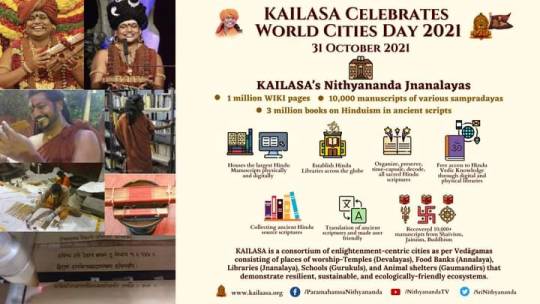
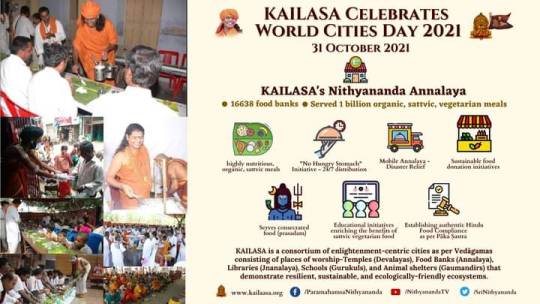

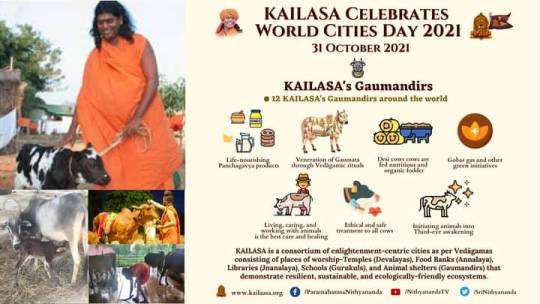
#nithyananda#kailasa#kailasassph#hinduism#bhavasamadhidarshan#worldcitiesday#comemorates#paramashiva#parashakti#devi#covid lockdown
0 notes
Photo
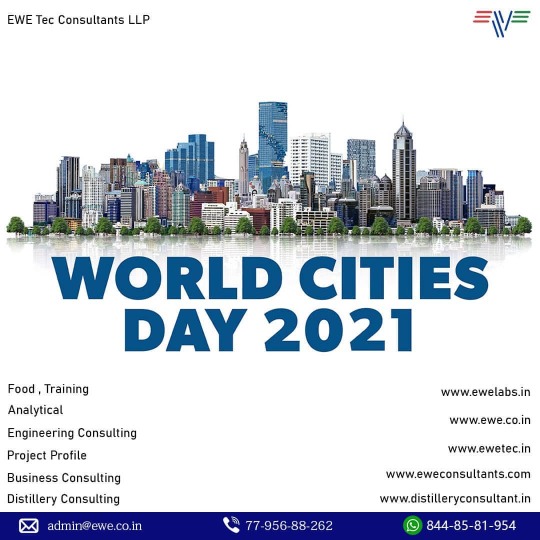
When you look at city, it’s like reading the hopes, aspirations and pride of everyone who built it. #ewetec #consultants #Wishing #youall #WorldCitiesDay #year2021 (at Noida) https://www.instagram.com/p/CVsk8VKv-v4/?utm_medium=tumblr
0 notes
Text
Papst Franziskus I.
Franziskus I: Lasst uns Städte bauen, die unter Wahrung ihrer kulturellen und religiösen Identität offen für Unterschiede sind und diese im Namen der Geschwisterlichkeit aller Menschen zur Geltung bringen. #FratelliTutti #WorldCitiesDay
https://twitter.com//status/1454749999644872712
0 notes
Photo
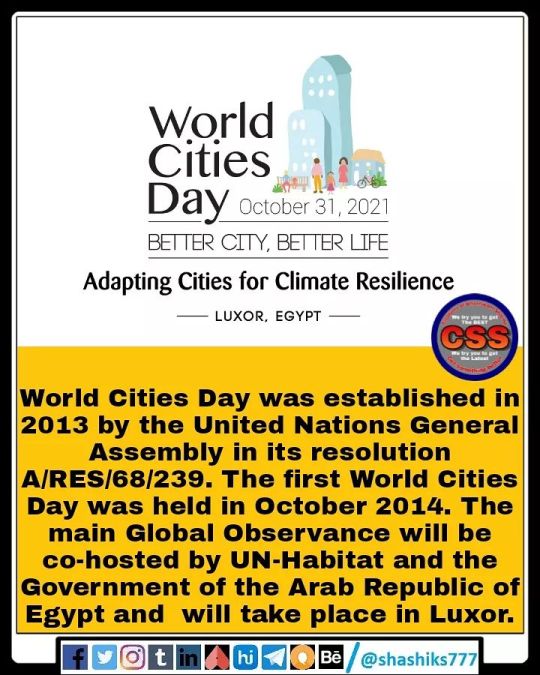
#WorldCitiesDay #WorldCitiesDay2021 #UrbanOctober #UnHabitat (at Creations of Shashikant Sharma) https://www.instagram.com/p/CVrq4Ygo_N3/?utm_medium=tumblr
0 notes
Photo
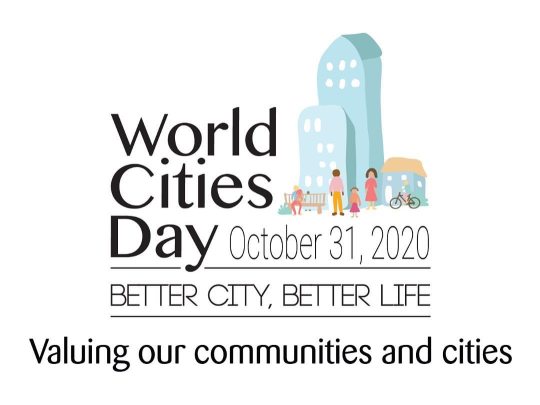
World Cities Day - 31 October 2020 Theme: Valuing Our Communities and Cities The impact of COVID-19 has re-shaped urban life around the world. Local communities have played a key role in contributing to keeping people safe and maintaining some economic activities. Community value encompasses local volunteering and people organizing in their own neighbourhoods as well as social movements that challenge poverty, systemic discrimination and racism. In informal settlements and slums in particular, communities are making a significant contribution while individual households in urban areas are providing an enabling environment for work and study in the home. UN-Habitat’s latest World Cities Report reinforces the benefits of cities that engage all stakeholders, including local communities to foster sustainable cities. The Secretary-General has identified cities and communities as being on the frontline of the COVID-19 response. Collectively, we can truly foster sustainable cities for all. Community activities can no longer be taken for granted or under-resourced. Policy makers and urban managers need to engage communities systematically and strategically in urban planning, implementation and monitoring to co-create the cities of the future. The recognition of communities’ value must be maintained beyond the virus outbreak. In the transition to a new sustainable urban normality, local communities must play an expanded role supporting government stimulus packages for employment creation, delivery of essential services, ensuring a green-economic transformation, the provision of adequate shelter and public space and reestablishment of local value chains. #WorldCitiesDay #WorldCitiesDay2020 #UN#WorldCitiesDay ____________________________________________ The ongoing mission of "CHANGING LIVES 1 PLATE AT A TIME" is to contribute to the wellbeing of the vulnerable via giving them access to safe, healthy and nutritious food, ENDING HUNGER! And advocating to develop poor communities, ENDING POVERTY! With your donation and support, you can help provide a meal for a person in need and support the operations of #EndingHunger #EndingPoverty with #ZeroHungerGhana https://www.instagram.com/p/CHBrm4QpNKk/?igshid=1n1lqqjuvh7id
0 notes
Photo
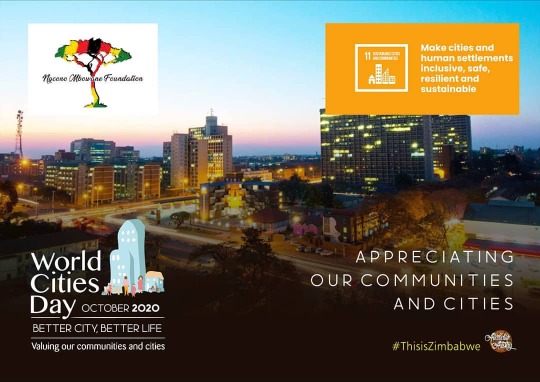
Valuing communities and cities of #Zimbabwe @amanda_ngcono #worldcitiesday #urbanization #21artvibe #CapturetheMomentsdgs #gainwithmafiakenyan #gainwithwestandmugweru #gainwithmchina #gainwithbundi #gainwithcarls #gainwithxtiandela (at Mombasa, Kenya) https://www.instagram.com/p/CHA5PiaF2wQ/?igshid=12v92qj0omx6q
#zimbabwe#worldcitiesday#urbanization#21artvibe#capturethemomentsdgs#gainwithmafiakenyan#gainwithwestandmugweru#gainwithmchina#gainwithbundi#gainwithcarls#gainwithxtiandela
0 notes
Photo
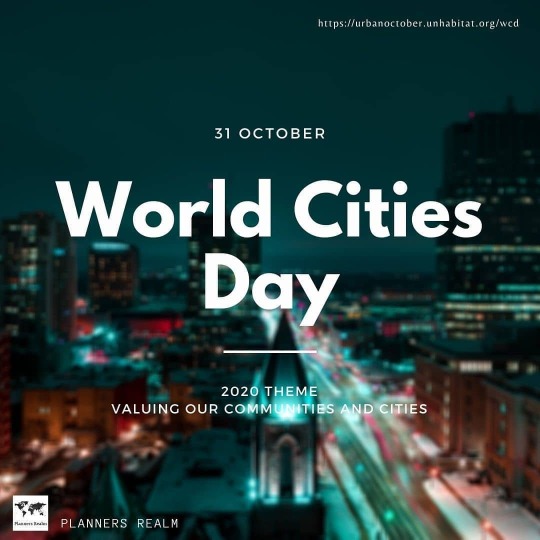
@planners_realm wishes everyone on World Cities Day. 🔻 World Cities Day 2020 is the seventh global celebration since the day was launched on 31 October 2014 in Shanghai, China. Under overarching theme of Better City, Better Life, the aim of the day is to focus the international community’s attention on urbanisation as a central issue for development and to encourage cooperation among countries in meeting opportunities and addressing urban challenges towards sustainable development. 🔻 ▪️2020 Theme : VALUING OUR COMMUNITIES AND CITIES▪️ The impact of COVID-19 has re-shaped urban life around the world. Local communities have played a key role in contributing to keeping people safe and maintaining some economic activities. Community value encompasses local volunteering and people organizing in their own neighbourhoods as well as social movements that challenge poverty, systemic discrimination and racism. In informal settlements and slums in particular, communities are making a significant contribution while individual households in urban areas are providing an enabling environment for work and study in the home. UN-Habitat’s latest World Cities Report reinforces the benefits of cities that engage all stakeholders, including local communities to foster sustainable cities. The Secretary-General has identified cities and communities as being on the frontline of the COVID-19 response. Collectively, we can truly foster sustainable cities for all. Community activities can no longer be taken for granted or under-resourced. Policy makers and urban managers need to engage communities systematically and strategically in urban planning, implementation and monitoring to co-create the cities of the future. The recognition of communities’ value must be maintained beyond the virus outbreak. In the transition to a new sustainable urban normality, local communities must play an expanded role supporting government stimulus packages for employment creation, delivery of essential services, ensuring a green-economic transformation, the provision of adequate shelter and public space and reestablishment of local value chains. 🔻 #plannersrealm #worldcitiesday https://www.instagram.com/p/CG_1-c2MmT5/?igshid=1ws9803ugfuoo
0 notes
Photo



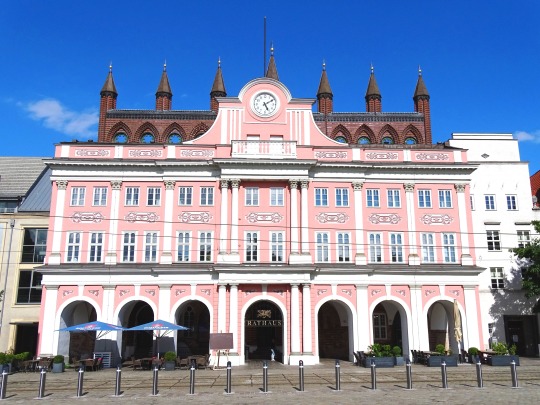
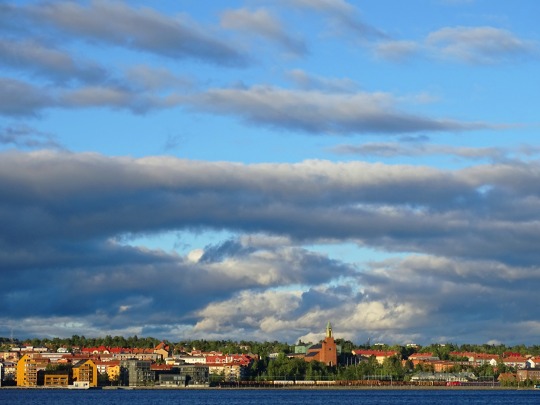

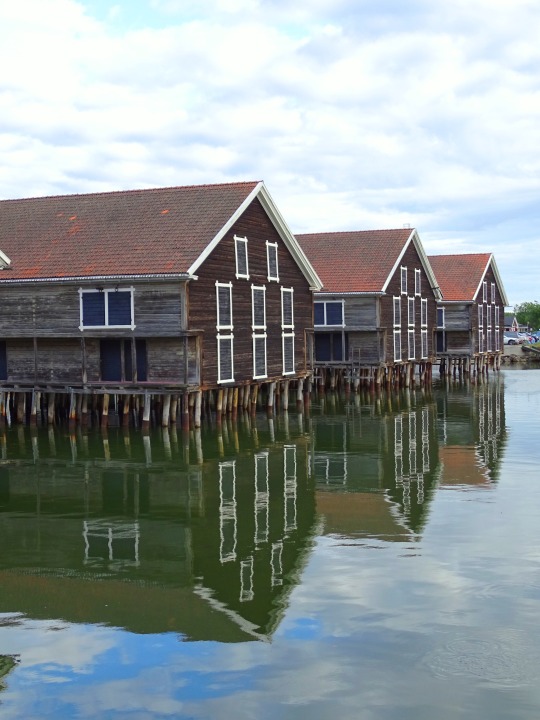
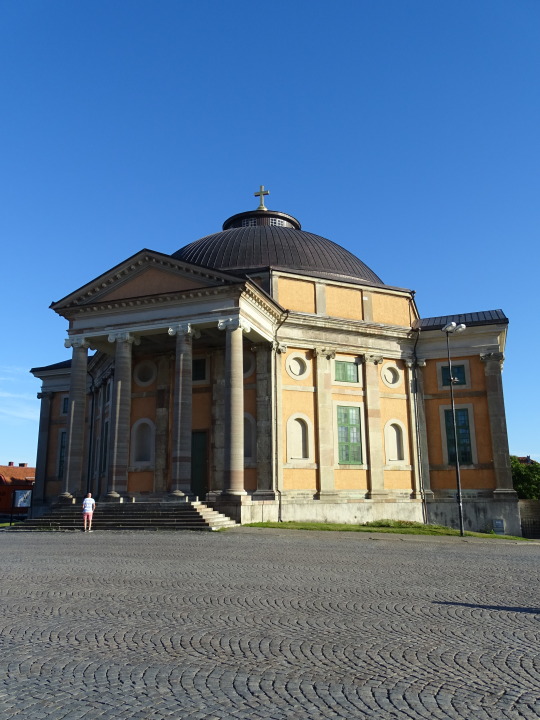
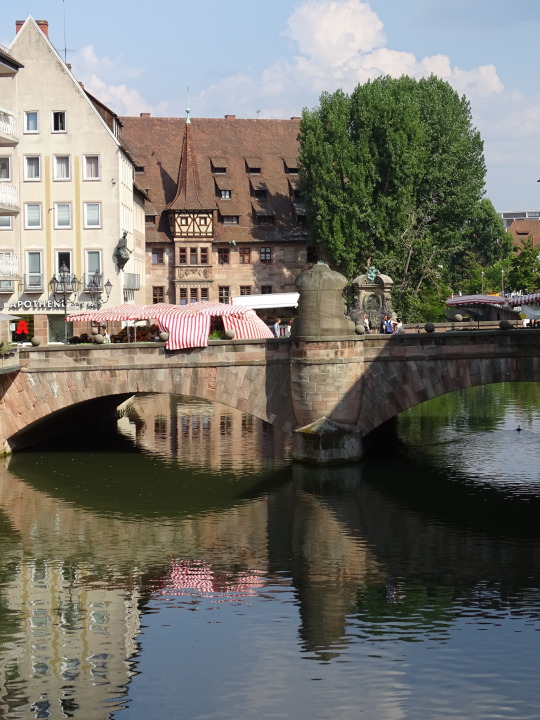
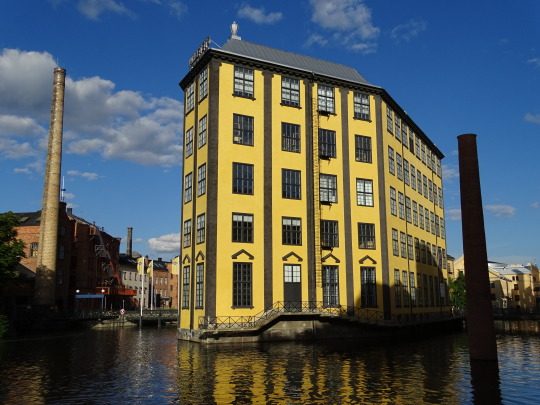
World Cities Day
As an outcome of the Shanghai International Expo 2010, the United Nations General Assembly in its resolution 68/239 of 27 December 2013, designated every 31st October as World Cities Day (WCD). World Cities Day seeks to promote global interest in urbanization and engender international cooperation to address the challenges of urbanization, thereby contributing to sustainable urban development. Over half the world’s population live in cities and this figure is expected to increase by three billion by 2050. The United Nations system, in particular UN-Habitat, relevant international organizations, civil society and all relevant stakeholders observe and raise awareness of the Day. The general theme of World Cities Day is Better City, Better Life, while each year a different sub-theme is selected, to either promote successes of urbanization, or address specific challenges resulting from urbanization. The theme of World Cities Day 2020 is Valuing our Communities and Cities. Information on the host city for the Global Observation will be made available soon.
Source
#Lejonet#Malmö#Landskrona Citadel#Sweden#summer 2020#travel#original photography#architecture#World Cities Day#WorldCitiesDay#citysape#landmark#tourist attraction#31 October#WCD#Trelleborg#Smögen#Östersund#Hudiksvall#Norrköping#Rostock#Germany#Nuremberg#Nürnberg#Deutschland#Church of the Holy Trinity#Museumsbrücke#Sverige
7 notes
·
View notes